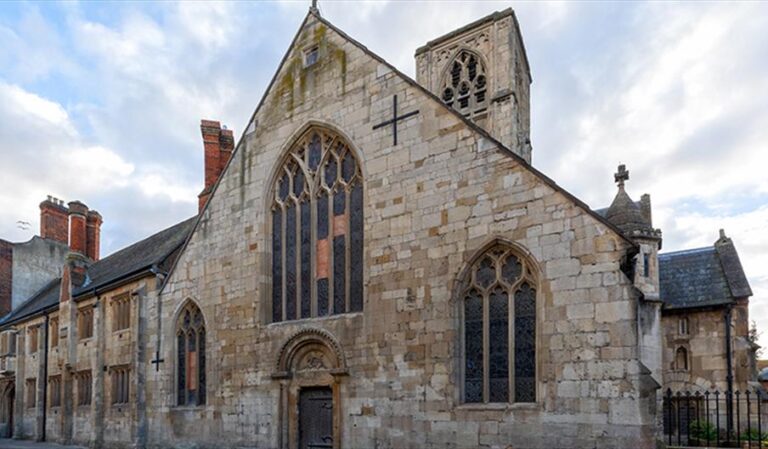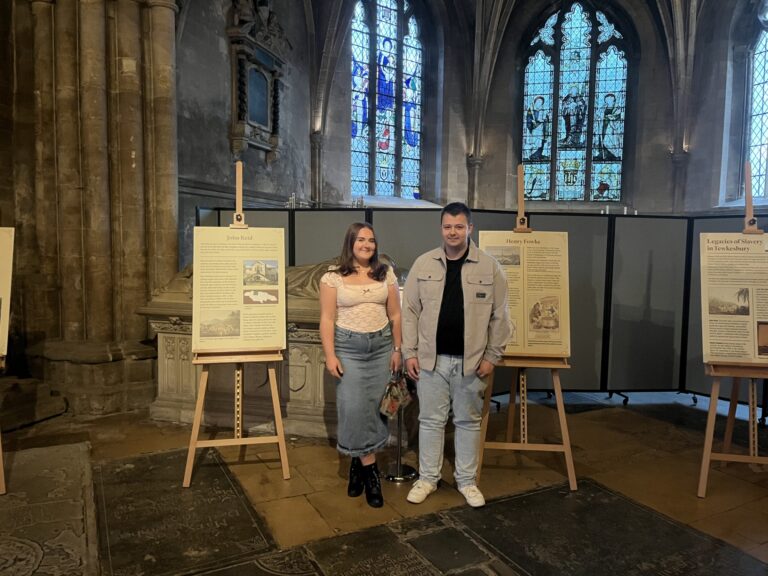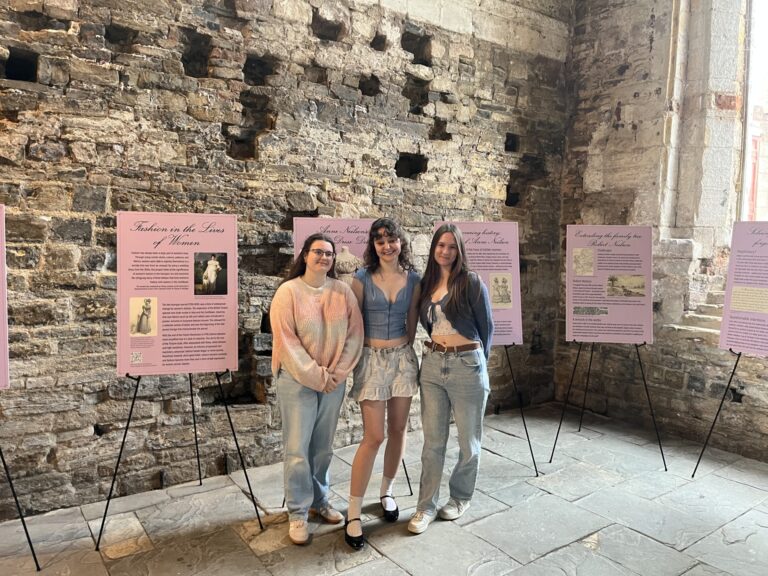| CC4HH
African American Abolitionists in Gloucester
This project was conducted by Nick Tracey, Abbie Coleman, Bethan Burley and Becca Taylor.
Jump to: Timeline | Introduction | Moses Roper | William Wells-Brown | Ellen and William Craft
Slavery and Abolitionism-Timeline
1807 – Abolition of the slave trade
1814 – William Wells Brown is born
1815 – Moses Roper is born
1824 – William Craft is born
1826 – Ellen Craft is born
1833 – Moses was sold to a plantation in Florida
1834 – William Wells Brown escapes from slavery
1834 – Slavery abolished in Britain
1837 – Moses started publishing slave novels and travelling England
1847 – William Wells Brown’s narrative is published
1848 – William and Ellen Craft escape to Philadelphia
1849 – William Wells Brown came to Britain and began to address problems of slavery as a lecturer
1850 – William and Ellen Craft moved to England after the Fugitive Slave Act
1851 – William Wells Brown goes to Gloucestershire to deliver anti-slavery lectures
1851 – William and Ellen Craft gave lectures in Gloucester
1854 – Moses Roper returned to England to lecture
1860 – William and Ellen Craft publish an account on their story
1865 – Slavery is abolished in the US
1873 – William and Ellen Craft raise funds and open a co-opted farm school for freedmens children
1884 – William Wells Brown dies
1891 – Moses Roper dies
Introduction
Britain’s involvement with the slave trade has a long history. The trade was promoted on a large scale via the granting of charters to private companies such as the Royal African Company. RAC was granted a chartered monopoly by Charles II in 1672. Over the next 150 years, British merchants developed a near perfect system to trade enslaved Africans across the Atlantic. Records indicate that Britain transported 3.1 million people from Africa between 1640 and 1807.
Ownership of slaves in Britain was common by the latter half of the 18th century with the black population numbering around 15,000 people. Most British slave-owners were absentee landlords with plantations in the Caribbean.
In the late 18th century organised anti-slavery societies emerged on both sides of the Atlantic. One of the first was the Society for Effecting the Abolition of the Slave Trade (SEAST), founded in 1787 after taking inspiration from the American Revolution.
Joining these anti-slavery societies was one of the most common ways that people contributed to the cause of abolition. Around 300,000 people joined the campaign and took part in a wide variety of activities, such as boycotting products produced by slave labour (mostly sugar), petitioning parliament, and attending anti-slavery meetings in order to raise awareness.
However, abolitionism was not confined just to Britain. Formerly enslaved people also became heavily involved with the movement. African American abolitionists played a crucial role, using their testimonies of slavery to put pressure on governments and slaveowners who were fiercely opposed to the consequences of abolition and the impact it would have on their business interests. Some of these African American abolitionists visited Britain in the 19th century, giving anti-slavery lectures across the country in an attempt to educate the British population about the brutality of slavery.
Using the Frederick Douglass in Britain and Ireland research website, which traces American abolitionism in Britain, this project examines the case studies of four African American abolitionists who visited Gloucester in the 19th century. These visits highlight how abolitionism and the battle to end slavery was a significant issue locally as well as internationally.
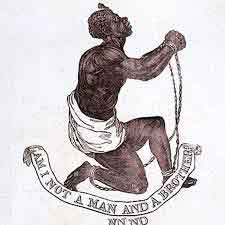

Moses Roper (1815-1891)
Moses Roper (pictured) was one of the first African Americans to depict the horrors of slavery in Britain. Roper was born a slave in Caswell County, North Carolina, around 1815.
While his birth date is not confirmed, it is believed that his mother was raped by their white slave master. Roper claims to have attempted to escape his slave plantation in Florida sixteen times, for which he received beatings. He eventually escaped to the Northern states, joining the American Anti-Slavery Society. Fearing arrest, he fled to England on the ship ‘Napoleon, claiming to be a steward.
Roper in ENgland
When Roper reached England, he was met by prominent English abolitionists, including Dr John Morrison, John Scoble and George Thompson. They provided Roper with an education at boarding schools in Hackney and Wallingford, as well as a degree at the University of London in 1837. Much like William and Ellen Craft, British abolitionists were essential to advancing Roper’s ability to lecture and produce his book, which sold 25,000 copies.
Roper’s lectures and gruesome accounts were discredited by many who attended, which was a common occurrence for former slaves. The tone with which journalists described his experiences create a sense of distrust. One account in the Hampshire Advertiser and Salisbury Guardian, 13 July 1839, notes: “We have heard of a cat having nine lives, but [Roper] must have had at least 18, and his fingers and toes, doubtless, possess the re-producing powers of the crab…”. Roper confronted anyone who dismissed his account as lies, offering to recreate his experiences on them.
As one of the first American abolitionists to speak in Britain, it is possible that, coupled with racial prejudice, Roper’s experiences were considered to be far too extreme to be believed.
Roper in Gloucestershire
Roper visited Gloucestershire between 1836-1848, travelling to Gloucester, Stroud, Cheltenham and Stow-on-the-Wold. His talk in Gloucester is listed in his Narrative (1848) as being organised by the Quakers, who were prominent in the abolitionist movement. An account from the Gloucester Journal, 23 November 1839, documents Roper’s lecture at the Royal Victoria and Albert Foreign School. The journalist writes that Roper spoke with ‘great simplicity. There was evidence of a range of sympathy and attention throughout the crowd at the event, and many copies of his book were sold.

Roper and other former slaves like him were sometimes doubted for their accounts, but Roper’s testimonies have been widely corroborated by historians. Different accounts of the brutality of slavery provide further evidence for the reliability to his claims, which were often shocking to British audiences. Roper created a significant foundation for future abolitionists and introduced many to the daily horrors of slavery.

William Wells Brown (1814-1884)
William Wells Brown (pictured) was a prominent African-American abolitionist, lecturer, novelist, and historian in the US. He was born into slavery in Montgomery Country, Kentucky. Like others, when he tried to escape slavery, he was severely punished. Brown finally managed to escape to Ohio in 1834 at the age of 19.
Brown is best remembered for his continuous political activism and being involved in the anti-slavery movement. Brown later became a conductor on the ‘Underground Railroad’ and worked on a Lake Erie steamer which ferried slaves to freedom in Canada, a British territory where the escaped could be safe.
Due to his reputation as a powerful orator, Brown was invited to the National Convention of Colored Citizens, where he met other prominent abolitionists. He supported the abolitionist cause of William Lloyd Garrison, a leading American abolitionist who campaigned for the immediate end to slavery. Brown shared his own experiences and insights into slavery in order for others to support the cause.
Brown in ENgland
Brown travelled to Europe in 1849, and stayed in Britain until 1854 where he eventually secured his liberty. Like Frederick Douglass, his British friends helped raise the funds to purchase his freedom. Until this point, he remained at risk of being apprehended and returned to his original slave masters, especially after the passing of the punitive Fugitive Slave Law of 1850 in the US. While in Britain, Brown toured extensively, speaking to audiences about his experiences. He was regarded as a brilliant speaker. He published several books about his experiences of slavery and his time in Europe. While in Britain, Brown published Clotel (1853), which is considered one of the first works of fiction by an African American author.

Brown in Gloucester
Brown’s anti-slavery speeches were the basis of his autobiography, first published in Boston in 1847. He gave two speeches in Gloucester on 19 and 20 May in 1851 at the ‘Circular Room’ in Worcester Street. The specifics of these two speeches remain hidden, but we can imagine the subjects he would have discussed by looking at other speeches he gave as well as the poster above.
In London on 2 November 1849, he told his audience ‘I will not acknowledge that any man has a right to hold me as property, till he can show his right to supersede the prerogative of that Creator whose alone I am. He wanted to follow up the work of other abolitionists by describing slavery ‘as it was, and accounting for the horrors that were still being experienced in the United States after Britain had already abolished slavery.
Ellen (1826-1891) and William Craft (1824-1900)
Ellen and William Craft were both born and enslaved in Georgia, US. They escaped in December 1848 by traveling by train and steamboat. Their escape was made easier by Ellen’s ability to cross the boundaries of race, class and gender. She presented herself as a white man, with William posing as her personal servant. Helped by other abolitionists, the couple spent their time in the UK traveling and giving lectures.
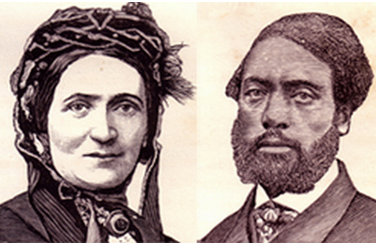
Ellen and William in England
Leaving America when threated by the Fugitive Slave Act, their escape was aided by fellow abolitionist Lydia Neal Dennett, who arranged their passage on a steamboat. When they arrived in England they continued to be aided by English abolitionists.
The 1851 census shows they were living with Wilson Armistead, the leader of the Leeds ‘Anti Slavery Association’. During their time in England they worked hard as abolitionists and for other causes. For example, Ellen participated in reform organisations such as the London Emancipation Committee. They continued earning money by giving lectures and talks about their experiences as former slaves and how they escaped.
Ellen and William in Gloucester
Ellen and William gave lectures all across the country. They came to Gloucester with William Wells Brown on 19 and 20 May 1851. They returned to Gloucester in June 1858. While no records of the speeches have been found, a report in The Liberator described the sincerity and authenticity of a speech they gave in 1849: ‘Mrs. Craft was then introduced to the audience, and gave a very particular account of their escape. It was told in so simple and artless a manner, as must have carried conviction to the mind of every one present.’
The couple published a written account of their story: Running a Thousand Miles for Freedom; Or, The Escape of William and Ellen Craft from Slavery (1860). This account is widely accepted as one of the most compelling slave narratives before the American Civil War.

Ellen and William return to the United States
When the American Civil War brought an end to slavery and it was officially abolished by the 13th Amendment of the US Constitution in 1865, Ellen and William returned to the United States. During the era known as Reconstruction, they opened an agricultural school for the children of formerly enslaved people in Georgia. Many African American communities built and set-up schools as a priority after Emancipation, and these were often targets of the newly formed Klu Klux Klan.

